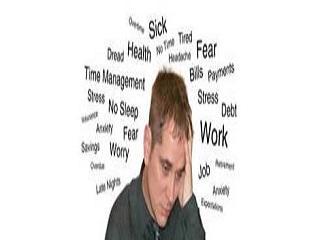Power is a ubiquitous part of organizational life

Power is a ubiquitous part of organizational life. Defined as having control over valuable resources, power is a sought after commodity, as it allows people access to nice things, esteemed roles, and sometimes even opens the door for greater respect from one’s colleagues. That said, power is not an ‘either-or’ thing. That is, within the organization (and beyond), workers don’t either possess or lack power. In fact, there is a whole continuum in between. We might hold a place of power in an organization but because of organizational restructuring, feel like it is unstable and easily lost. Or we might be in a position of relatively low power, with the belief that a meaningful promotion is just around the corner, which will boost our organizational standing.
At the same time, the stress that workers experience in their jobs is getting to be a larger concern for organizations, as well as society, in general. Research has shown that job stress is a major source of life stress for most people. Stress is also associated with serious health concerns, such as heart attacks and strokes. In an extreme example, in the New York police force, the relationship between job stress and heart attacks is so well accepted that when an officer has a heart attack, it is automatically considered a “work-related injury.” Power (and the stability of one’s power) is unquestionably related to the stress that a person experiences. But how so?
Along with my collaborators, Frank Walter, Sanne Feenstra, Jin Yan , and Janka Stoker I examined the interactive role of power and the stability of that power on work stress.
Using a large sample of Chinese managers throughout the organizational hierarchy, we found that power – examined as both the sense of power a person felt and the level he/she was within the organizational hierarchy – interacted with stability to affect workers’ stress experience. Specifically, it was those at the top who felt like their power was unstable and those at the bottom who felt like they would never gain power who experienced the greatest amount of stress. We label these people the ‘powerful unstable’ and the ‘powerless stable.”
While our investigation did not examine why this relationship occurred, we theorized that power (and all that accompanies it) is such a valuable commodity that the prospect of losing it causes quite a bit of stress for workers. And for those who lack power and don’t see any possibility for upward movement, this hopelessness also creates stress.
So, how do these results inform HR managers’ strategies for dealing with worker stress? First, rather than emphasizing only ‘upward mobility’ career trajectories, organizations might wish to talk more in terms of lateral moves. That is, career movement that emphasizes the broadening of one’s organizational experiences without threatening those at the top of the hierarchy may be one wise strategy to minimize worker stress. Second, our study found that sense of power operated exactly the same way as one’s actual organizational position for affecting stress. Thus, organizations may benefit from creating relatively high power stability while, at the same time, trying to enhance employees’ subjective sense of power at all levels of the hierarchy. This could be accomplished through things like emphasizing worker autonomy, voice, and participation in the workplace.
In sum, given the importance of minimizing worker stress, particularly at a time where organizational restructurings are becoming more and more commonplace, understanding the relationship between power and stability may be two crucial pieces for solving this puzzle.


